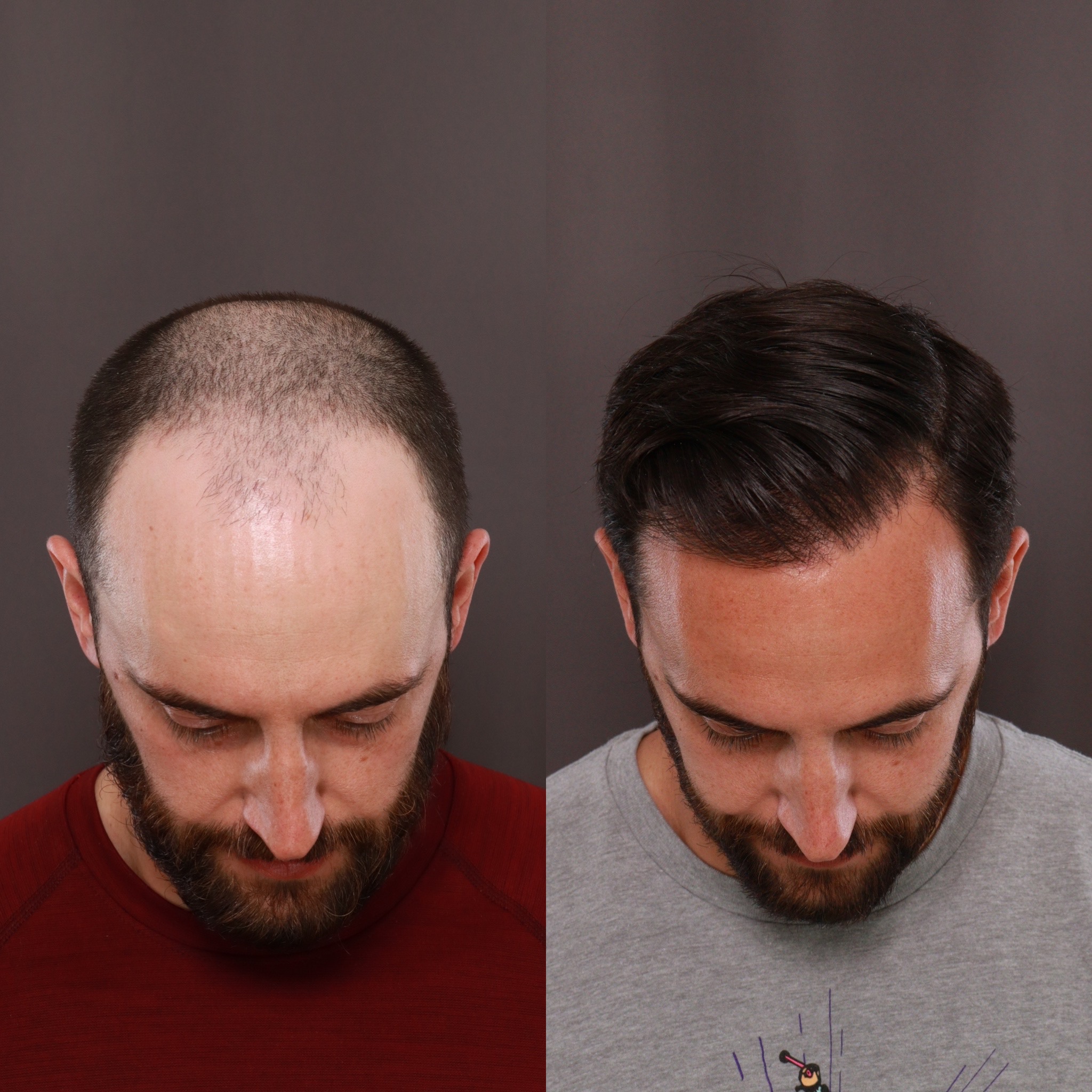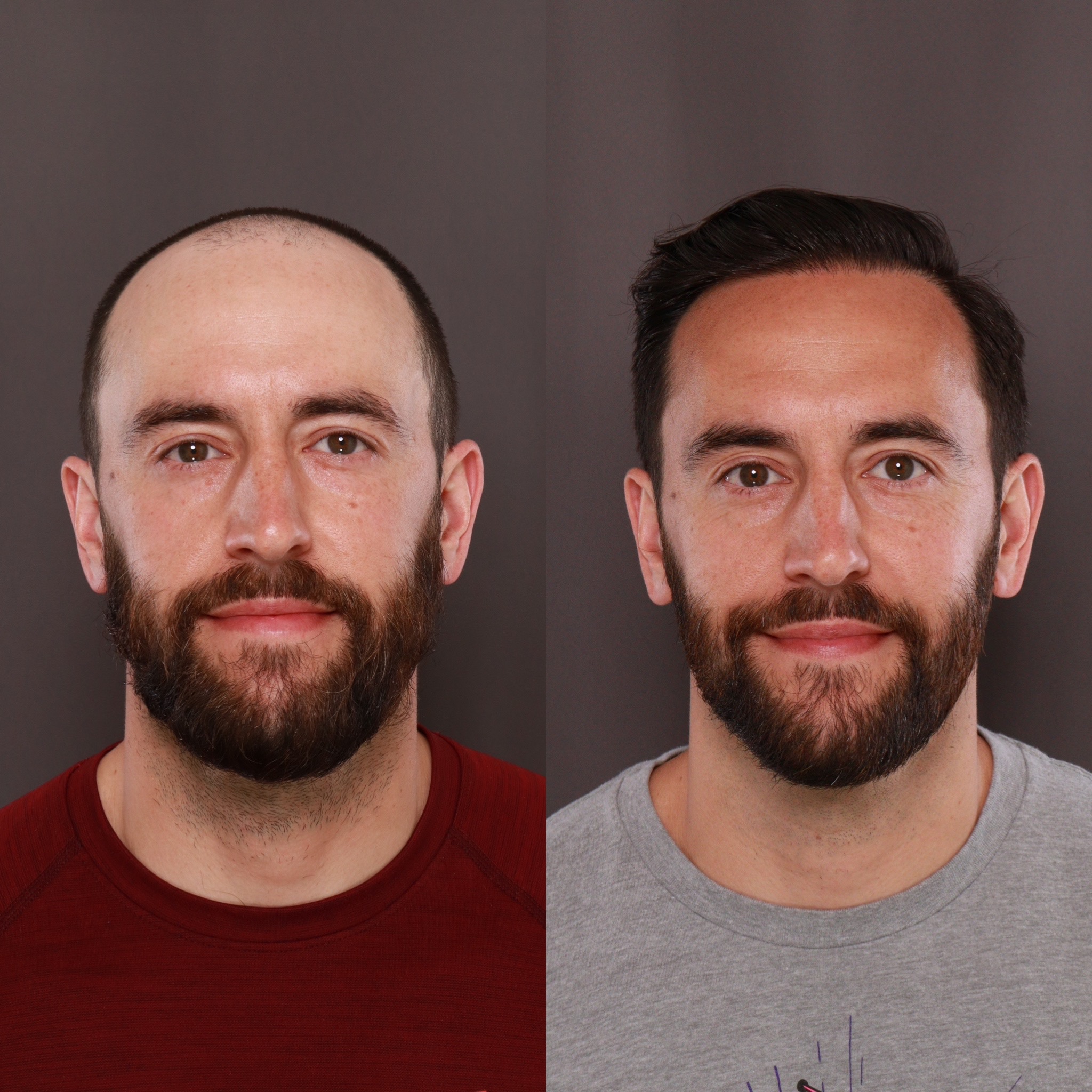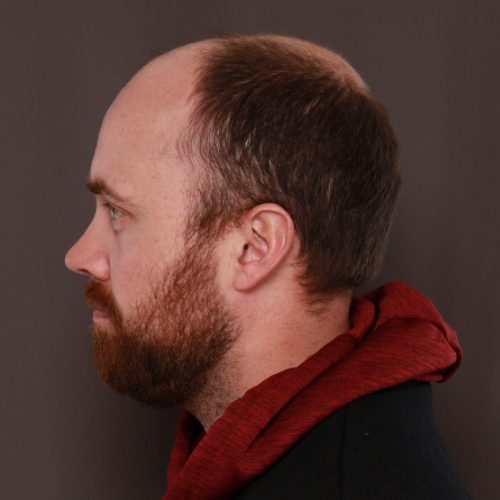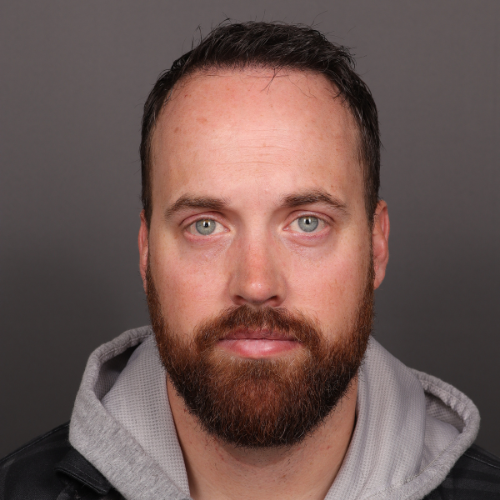Getting a haircut after a hair transplant can feel like navigating uncharted territory. Many people wonder, “When is it safe to start using clippers?” The truth is that timing is key. A hair transplant isn’t just about growing new hair; it’s about giving those precious follicles the best chance to take root and thrive. You may be itching for a fresh look, but understanding when and how to groom without risking your results is crucial. Let’s break down what you need to know about waiting patiently before reaching for those clippers and exploring the right methods to style your new hair safely.
It is generally recommended to wait at least two weeks after a hair transplant before using clippers, as this allows the newly transplanted follicles to settle securely. By around one month post-surgery, patients may start using scissors and can cautiously use clippers in non-grafted areas, while caution should still be exercised to prevent dislodging any fragile follicles.
Do you have questions?
Call the UFP Hair Restoration team today at 801.849.8140. We’re here to answer any questions you may have about best practices for hair care post-transplant, and if you’re ready to take the next step in your hair restoration journey, we’re here to support you every step of the way!
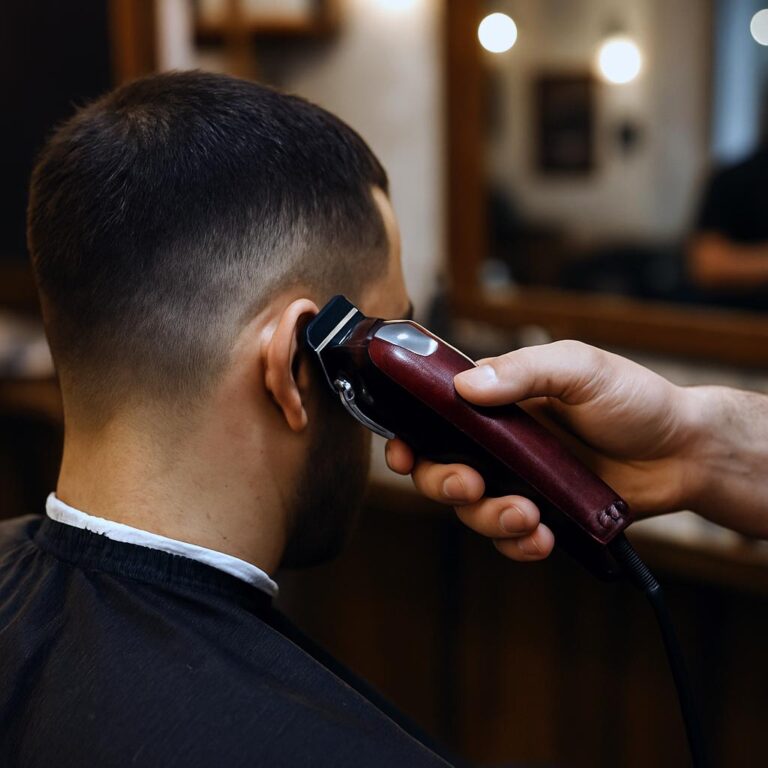
Doctor’s Advice on Clippers Post-Transplant
Following a hair transplant, patience truly becomes a virtue. Most doctors recommend waiting at least two weeks before introducing clippers into your grooming routine. The reasoning behind this recommendation is straightforward: during the first couple of weeks post-surgery, the newly transplanted follicles need time to stabilize and secure themselves in the scalp. It’s like giving a new seed planted in soil enough time to take root before exposing it to elements that might dislodge it.
Hair transplant surgeons typically caution their patients against using clippers too soon, particularly at lower settings that could irritate delicate follicles. Instead, it’s wise to start with clipper guards set to a number 2 or higher. This precaution not only ensures you avoid cutting too closely but also minimizes any risk of causing discomfort.
In addition to timing, there are other critical considerations when it comes to using clippers post-transplant.
After allowing the prescribed healing period, it’s crucial to approach your first haircut with caution. Many individuals feel a sense of relief when they venture into getting their first haircut sooner than anticipated; however, practicing moderation is key. As you begin, stick to light touch-ups with clippers rather than drastic cuts. Some patients find success using level guard attachments that help control the length and distance from the scalp effectively.
Interestingly enough, several users share stories that debunk common fears surrounding haircuts shortly after transplantation. Contrary to popular belief, many conclude that pulling out follicles is unlikely after just two weeks. Moreover, experiences shared across patient platforms indicate that choosing initial cuts conservatively allows individuals to navigate their comfort levels while observing how their grafts react.
As you progress through the weeks following your transplant, communicating with your surgeon remains crucial.
Regular follow-ups can provide peace of mind as you monitor the health of your newly transplanted hair and receive personalized feedback on your grooming choices. Hair management isn’t just about aesthetics; it’s about developing trust in the process and ensuring you’re doing what’s best for your scalp over time while striking the right balance between care and style.
Avoiding Clippers Right After Surgery
Using clippers immediately after a hair transplant can lead to several potential complications that could jeopardize the success of your procedure. One of the most significant risks is the accidental dislodgement of grafts. Treating freshly transplanted follicles like regular hair is risky—those little “seeds” need time to settle securely into the scalp before they can withstand any grooming. If clippers are applied too early, you could unintentionally disturb or remove these delicate grafts, leading to uneven growth or, in more severe cases, infection.
Imagine having just planted seeds in your garden; would you dare to mow over them while they’re still taking root? The same principle applies here: patience is vital for success.
During the critical initial period, which typically spans around two weeks, it’s essential to avoid any tools that could put pressure on or irritate the grafted area. Your scalp will be sensitive and swollen right after surgery, so using clippers during this stage can exacerbate discomfort and possibly damage those freshly implanted follicles. Engaging in this risky behavior could have lasting consequences on the aesthetic outcome of your transplant.
By maintaining a strict no-clipper policy for at least two weeks post-surgery, you’ll be giving your new hair exactly what it needs—the opportunity to settle and begin healing without disruption. This phase is not merely a suggestion but an integral part of post-operative care designed by medical professionals to ensure optimal results.
Enjoy Your Hair Regrowth Results
At UPF Hair Restoration, our patients are thrilled with their results and have shared in a similar journey. You can learn more and see their results here.
Hair Regrowth Timeline Explained
One of the most critical aspects after a hair transplant is recognizing what to expect in terms of regrowth. Understanding this timeline helps you feel more at ease and makes the overall experience more manageable. The healing process isn’t merely about waiting; it’s about nurturing those precious follicles as they begin their journey back to life.
Month-by-Month Breakdown
- First 2 Weeks: This period is all about healing. You’ll see minimal growth, and your focus should be on recovery. It’s essential to avoid any stress on the scalp, which means no haircuts or touching the graft area.
- Month 1: Welcome to the shedding phase! It can feel disheartening when you notice some of your newly implanted hair falling out, but worry not; it’s entirely normal. This is your body’s way of getting rid of hair that won’t take root, making space for new growth.
- Months 2-3: Here you’ll start to see slow regrowth. New hair may emerge fine and soft, almost like baby hairs, filling in where the transplanted strands are beginning to settle. During this time, resist the urge to rush into cutting your hair with clippers; patience truly becomes a virtue now.
- Months 4-5: The excitement builds as growth becomes more noticeable! Your hair will start thickening, although it’s still in its formative stages—still too early for clipper use over the transplanted areas.
- Month 6: Congratulations! By this point, you might observe significant growth. At this stage, there’s a better feeling of fullness, and you may contemplate lighter touch-ups with clippers on non-grafted regions.
- Month 12: Finally, near the one-year mark, much of your growth should be visible, providing a clearer picture of how the overall result looks. By now, regular hair care practices along with prescribed styling techniques can resume almost entirely.
Keeping aware of these stages allows you to manage expectations and helps create an effective plan for your post-operative hair care routine.
Post-Transplant Hair Care Tips
Proper care immediately following the surgery is crucial for achieving the best results from your hair transplant. The first few weeks are a delicate time for new grafts, and how you treat your scalp during this period can make all the difference. One of the most essential steps is gentle washing. Starting just three days after the transplant, opt for a gentle, sulfate-free shampoo to cleanse your scalp without causing irritation. Remember, scrubbing isn’t just unnecessary—it can be harmful. Use the tips of your fingers to lightly dab the area, letting the water do most of the work while ensuring you keep the grafts protected.
Alongside maintaining cleanliness, protecting your scalp from environmental factors holds equal importance.
For at least two weeks post-transplant, it’s crucial to minimize direct sun exposure. Sunlight can irritate the sensitive graft area and may also jeopardize healing. A simple solution is to wear a hat when outdoors or apply sunscreen carefully around your scalp after consulting with your surgeon on what product is safe to use. Being proactive in sun protection can vastly improve healing as well as safeguard those precious new follicles.
In addition to cleanliness and sun protection, hydration plays a vital role in a smooth recovery.
Keeping your scalp moisturized can reduce feelings of dryness and itchiness that often accompany healing skin. However, caution is key here; avoid using heavy oils that may clog pores or migrate toward fresh grafts. Instead, consider using light moisturizers specifically aimed at scalp health or herbal tonics that are soothing yet gentle. This approach promotes a balanced environment for graft growth without overburdening your new hair.
As you focus on hygiene and hydration, be mindful of what you wear as well.
Avoid wearing tight hats or headgear during the initial recovery phase as they can irritate the graft area and inhibit airflow to the newly transplanted follicles. Loose-fitting hats are preferable if you need some coverage from elements before fully healing. It’s essential to allow your scalp room to breathe while it’s in such a fragile state.
Light exercise can often seem restrictive after surgery, but there’s good news for those itching to return to their routines.
Generally, patients may ease back into light exercise about two weeks after their transplant—think leisurely walks or gentle yoga—but vigorous activities that induce heavy sweating should be avoided longer, at least for a month or until advised by your surgeon. Excessive sweat can irritate the grafts and impede healing, so listening to your body and erring on the side of caution is wise during this recovery phase.
Always communicate closely with your surgeon regarding any concerns or specific care instructions unique to your situation. Regular follow-ups not only help monitor your progress but also grant peace of mind as you navigate through these early stages post-transplant.
Short Hair Styling Alternatives
While you’re eagerly anticipating the time you can use clippers again, there are several alternative styling options that can help you maintain a polished appearance.
First on the list is the trusty scissors. If you’re feeling cautious about using clippers too soon, scissors allow for more precision around the sensitive graft area. This method lets you trim away any stray hairs without risking damage to your transplanted follicles. It’s important to do this gently, so you don’t inadvertently pull on the hair or disturb the grafts.
Next up, consider utilizing comb-overs as a styling technique. If you’re experiencing uneven growth or areas that seem sparse, strategically placed comb-overs can create the illusion of fuller hair while keeping your grafts protected. By parting your hair to cover less developed spots, you can confidently navigate through social situations without feeling self-conscious.
Additionally, incorporating texture sprays into your hair care routine can do wonders for enhancing volume and disguise thinning patches. These lightweight sprays not only add a touch of lift but also give your hair that desired tousled look without weighing it down. A little texture can make a big difference, providing a sense of fullness even when your hair is still settling in after the transplant.
Remember, nurturing both the new growth and your styling routines will yield the best results in the long run.
As you explore these alternatives, it’s essential to continue prioritizing proper care for your transplanted follicles while enjoying experimentation with these styling techniques. With a strategic approach to maintenance, consider seeking professional insights for optimal hair management.
Professional Hair Stylist Consultations
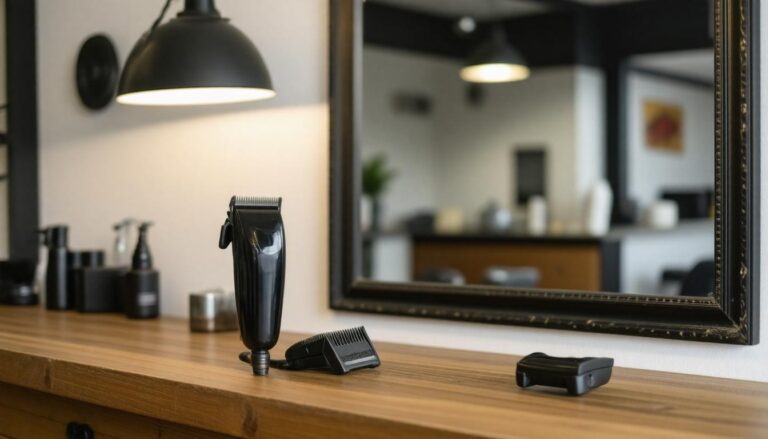
The expertise of a professional hairstylist who specializes in post-transplant care can significantly enhance the health and appearance of your new hair. They have experience working with individuals on similar journeys and understand the intricacies of your unique situation, including what’s best for your scalp and follicles during the critical healing process.
Having someone knowledgeable in this area provides reassurance as you navigate through the early stages after a hair transplant. It’s comforting to know that you’re not alone; seasoned professionals can offer insights tailored specifically to your needs. They help you avoid common pitfalls—like using the wrong tools or products—which could potentially harm your newly transplanted follicles. For instance, stylists at dedicated Hair Restoration Salons are trained to handle sensitive scalp conditions and can customize their approach based on each client’s individual healing progress.
With regular communication and feedback from your stylist, you can develop long-term hair management strategies that consider both aesthetics and follicle preservation.
As healing occurs and confidence grows, these experts can guide you on how to gradually reintroduce clippers into your routine while minimizing risk to your grafts. They possess practical tips for when it’s safe to start using clippers again, helping you make informed decisions that align with the ongoing health of your hair. Prioritizing professional advice enhances post-transplant styling while serving as a foundation for maintaining your desired look and protecting your investment in that fresh head of hair.
Long-term Hair Management
Long-term care is essential for ensuring the lasting vitality of your hair transplant. It’s not just about enjoying that fresh look; it’s about nurturing it to promote continued growth and appearance. One of the simplest ways to maintain your new hair is through regular trims.
By scheduling haircuts every four to six weeks, you’ll keep your hair looking healthy while preventing split ends from reaching up to the roots. Regular trims help maintain shape and style, which is crucial as your hair settles into its new home.
A consistent schedule with your stylist can create a routine that reinforces good habits and shows results over time.
Equally important is a healthy diet, rich in essential vitamins and minerals like biotin, vitamin E, and zinc, which directly support hair growth. Foods such as leafy greens, nuts, eggs, and fatty fish are packed with nutrients beneficial for both health and hair quality. Not only do these foods fortify your body, but they also strengthen each follicle.
A well-nourished body translates to well-nourished hair—it’s simple biology! Hydration also cannot be overlooked; drinking ample water keeps your body hydrated and helps those follicles thrive.
Another aspect that many may overlook is scalp care. Taking a few minutes each day for scalp treatments or massages can significantly enhance blood circulation in the scalp. This increased blood flow promotes healthy follicle function and growth. Consider using essential oils like rosemary or peppermint during your massage for added stimulation—you’d be surprised at how invigorating a simple practice like this can be!
Consistency is Key: Maintain a regular hair care routine tailored specifically for your needs based on your transplant’s status. This means sticking to sulfate-free shampoos and moisturizing conditioners to protect the delicate balance of your new follicles. Following the right post-operative instruction from your surgeon will equip you with a solid foundation to build upon.
By implementing these practices into your daily life—diet changes, diligent trimming schedules, and scalp care—you set yourself up for vibrant, long-lasting results from your transplant journey.
In summary, nurturing and managing your hair post-transplant is pivotal for both its health and appearance. Committing to regular care routines will pay off with rewarding results over time.
Additional Resources
- Shock Loss After Hair Transplants
- How to Sleep After a Hair Transplant
- Foods That Can Cause Hair Loss: What to Avoid
- Learn more about FUT. vs FUE
- How Often to Wash Hair After a Hair Transplant
- How To Care For Your Hair After A Hair Transplant
- How Long After Hair Transplant Can I Workout? Timeline
- How to Remove Scabs After Hair Transplant: Healing Care Tips
- Wearing a Hat After a Hair Transplant
If you are someone who is considering a hair transplant, UFP Hair Restoration offers excellent options.
Contact us to schedule in Layton or Draper, UT locations for a hair restoration consultation or call 801.849.8140.
